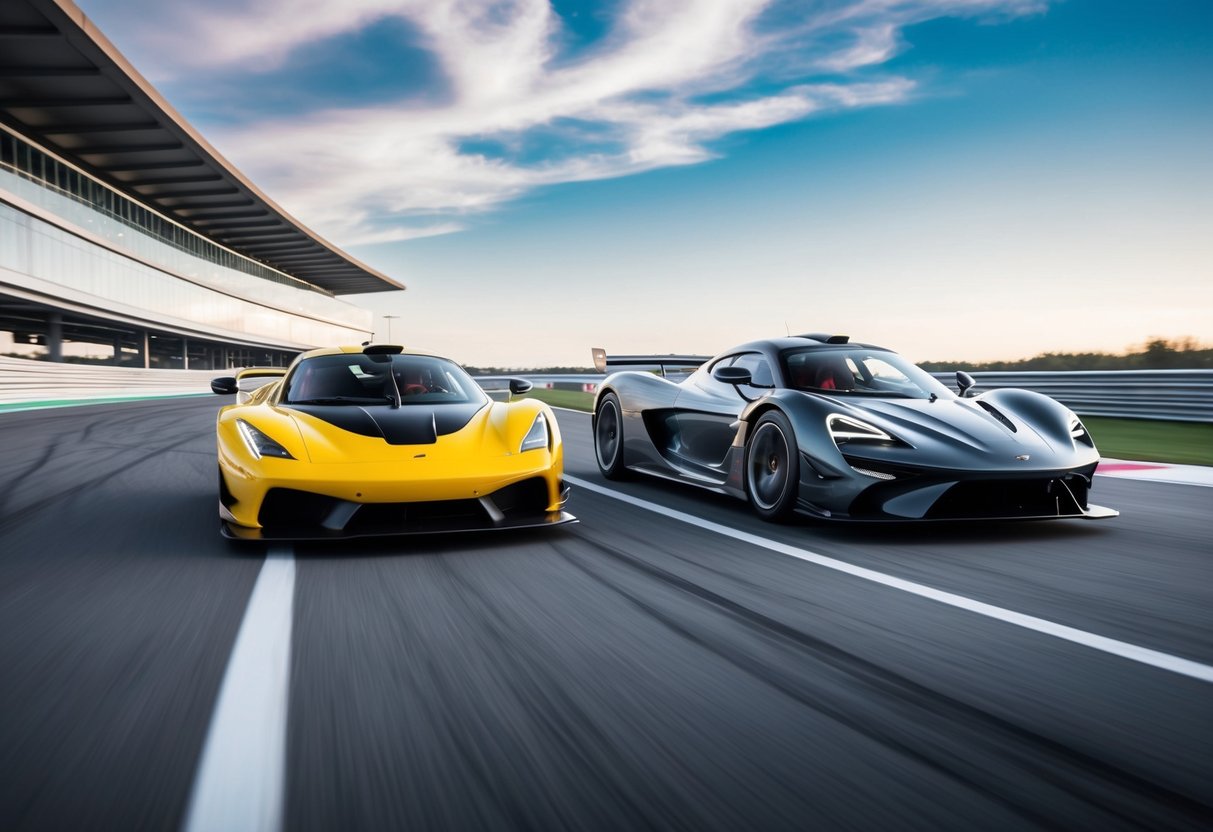
The world of high-performance cars is fascinating, marked by terms like “hypercar” and “supercar.” These categories, though similar in some ways, reflect distinct segments of the automotive market. Hypercars outperform supercars in terms of speed, technology, and exclusivity, setting a benchmark for automotive excellence. This differentiation in capability and prestige sparks interest in what truly separates these two titans of the road.
Supercars have been at the forefront of automotive innovation, combining speed, style, and performance in a package that commands respect. They represent the pinnacle of engineering from premier car manufacturers, known for their distinctive designs and impeccable craftsmanship. Yet, hypercars take these qualities to an even higher level, pushing boundaries with cutting-edge technology and advanced materials.
Readers intrigued by automotive engineering will find much to explore in the nuances between these two categories. While supercars offer an entry into the world of elite automotive performance, hypercars redefine the limits of what is possible on the road, often powered by hybrid or fully electric systems. Understanding these differences provides insight into the evolving nature of luxury and performance cars today.
Defining Hypercars and Supercars
Hypercars and supercars represent the pinnacle of automotive performance and prestige. This section examines their historical evolution and modern characteristics, highlighting how these extraordinary vehicles set themselves apart from regular sports cars.
Historical Evolution
Supercars first gained attention in the 1960s, with models like the Lamborghini Miura establishing new benchmarks in speed and design. They prioritized innovative engineering and luxury, introducing advanced aerodynamics and high-performance engines. As the decades passed, supercars evolved, incorporating cutting-edge technology to maintain their status as leaders in performance and style.
Hypercars emerged later, largely in response to supercars. They pushed boundaries even further, incorporating hybrid and electric powertrains to achieve unprecedented speed and efficiency. By the early 2000s, hypercars like the Bugatti Veyron were redefining performance standards, focusing on extreme speed, exclusivity, and groundbreaking technology.
Modern Characteristics
Today, supercars and hypercars excel in distinct but overlapping areas. Supercars usually blend performance with everyday usability, featuring powerful engines and luxurious interiors. They achieve remarkable speed without sacrificing comfort, making them desirable for both collectors and driving enthusiasts.
Hypercars, on the other hand, target maximum performance and innovation. They often feature advanced materials like carbon fiber and utilize hybrid or electric systems to augment traditional engines. Capable of reaching phenomenal speeds, hypercars are rare and exclusive, often produced in limited numbers with price tags to match. They embody cutting-edge design and technology, serving as a showcase for the future of automotive engineering.
The Pinnacle of Power and Performance
Hypercars represent the ultimate expression of motor vehicle power and performance. These elite machines offer exceptional horsepower and speed, surpassing supercars in both acceleration and agility.
Under the Hood
Hypercars typically feature advanced powertrains that push the boundaries of engineering. High-performance engines often produce more than 1,000 horsepower. This incredible power comes from a combination of cutting-edge technology, such as hybrid systems that integrate electric motors with traditional combustion engines.
Such an approach not only boosts speed but also enhances fuel efficiency compared to traditional engines. Additionally, many hypercars incorporate lightweight materials like carbon fiber and titanium. These materials reduce overall weight and improve performance metrics significantly. The use of these advanced materials allows for better handling and acceleration, making these vehicles unparalleled in their performance capabilities.
Top Speed and Agility
The top speed of hypercars often exceeds 200 miles per hour, with some even surpassing the 300 mph mark. These speeds are achieved through a combination of aerodynamic design and sheer power, allowing them to slice through the air with minimal drag.
Agility is another vital characteristic, with hypercars offering razor-sharp handling. State-of-the-art suspension systems and advanced aerodynamics provide unmatched stability and cornering abilities. This agility is crucial for maintaining high speeds while ensuring the driver’s control and safety.
Overall, hypercars exemplify a remarkable blend of speed, power, and precision, setting them apart as the pinnacle of automotive achievement.



